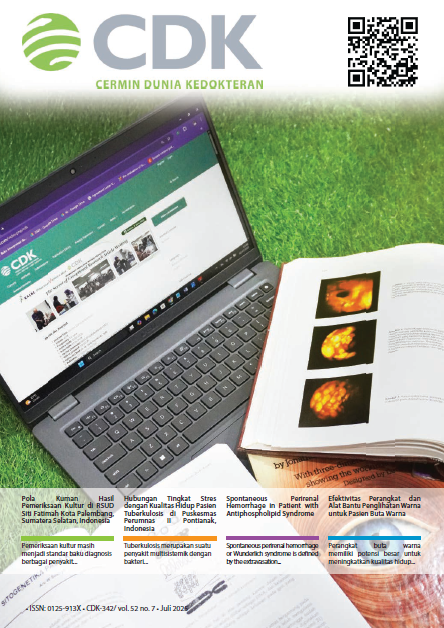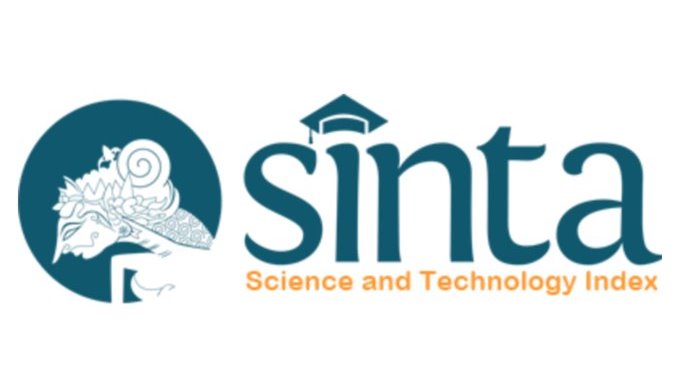Spontaneous Perirenal Hemorrhage in Patient with Antiphospholipid Syndrome
Case Report
DOI:
https://doi.org/10.55175/cdk.v52i7.1353Keywords:
Anticoagulant, antiphospholipid syndrome, spontaneous perirenal hemorrhage, Wunderlich syndromeAbstract
Introduction: Spontaneous perirenal hemorrhage (SPH), also known as Wunderlich syndrome, is a rare condition that can potentially progress into life-threatening non-traumatic retroperitoneal hemorrhage. Common symptoms include acute flank or abdominal pain, a palpable flank mass, and fulminant hypovolemia, collectively referred to as Lenk’s triad, and diagnosis is typically established radiologically using a CT scan. Antiphospholipid syndrome (APS) - a rare, immune-mediated hypercoagulable disorder that occurs in only 5 cases per 100,000 people per year worldwide. It is immune-mediated, characterized by persistent antiphospholipid antibodies (APLA) that cause both arteries and venous thrombosis, and can present as peripheral arterial disease (PAD), acute arterial occlusion, and early atherosclerosis. Case : A 33-year-old woman with chronic kidney disease (CKD) presented with SPH and incidentally diagnosed with peripheral arterial disease (PAD) and APS. Conclusion : Conservative management was beneficial for SPH without the need for surgical intervention; however, antithrombotic therapy for PAD posed additional challenges before the patient was eventually discharged in improved condition for outpatient follow-up.
Downloads
References
Attri V, Parmar KM, Prateek T, Kumar S. Large spontaneous perirenal haematoma following percutaneous transluminal coronary angioplasty. BMJ Case Rep. 2019;12(11):e232437. DOI: 10.1136/bcr-2019-232437.
Zhao Y, Jia X, Tong X, Niu G, Wang R, Liu L, et al. Spontaneous perirenal hemorrhage in systemic lupus erythematosus: A rare case report and literature review. BMC Nephrol. 2021;22(1):217. DOI: 10.1186/s12882-021-02424-9.
Parmar N, Langdon J, Kaliannan K, Mathur M, Guo Y, Mahalingam S. Wunderlich syndrome: Wonder what it is. Curr Probl Diagn Radiol. 2022;51(2):270–81. DOI: 10.1067/j.cpradiol.2020.12.002.
Ramirez-Limon DA, Gonzaga-Carlos N, Angulo-Lozano JC, Miranda-Symes O, Virgen-Gutierrez F. Wunderlich syndrome associated with angiomyolipomas. Cureus. 2022;14(4):e23861. DOI: 10.7759/cureus.23861.
Lee PS, Baikunje S, Teh SP, Chan T. A case of spontaneous perinephric hematoma from rivaroxaban. Cureus. 2022;14(9):e29429. DOI: 10.7759/cureus.29429.
Mavridis C, Lagoudaki E, Georgiadis G, Bouchalakis A, Mamoulakis C. Retroperitoneal hemorrhage due to spontaneous renal rupture as the first presentation of antiphospholipid syndrome: A case report. Cureus. 2023;15(3):e36839. DOI:10.7759/cureus.36839.
Chaturvedi S, McCrae KR. Diagnosis and management of the antiphospholipid syndrome. Blood Rev. 2017;31(6):406–17. DOI: 10.1016/j.blre.2017.07.006.
Radin M, Foddai SG, Barinotti A, Cecchi I, Rubini E, Sciascia S, et al. Reducing the diagnostic delay in antiphospholipid syndrome over time: A real world observation. Orphanet J Rare Dis. 2021;16(1):280. DOI: 10.1186/s13023-021-01906-1.
Tektonidou MG, Andreoli L, Limper M, Amoura Z, Cervera R, Costedoat-Chalumeau N, et al. EULAR recommendations for the management of antiphospholipid syndrome in adults. Ann Rheum Dis. 2019;78(10):1296–304. DOI:10.1136/annrheumdis-2019-215213.
Tumian NR, Hunt BJ. Clinical management of thrombotic antiphospholipid syndrome. J Clin Med. 2022;11(3):735. DOI: 10.3390/jcm11030735.
McDougal WS, Kursh ED, Persky L. Spontaneous rupture of the kidney with perirenal hematoma. J Urol. 1975;114(2):181-4. DOI: 10.1016/s0022-5347(17)66981-7.
Cinman AC, Farrer J, Kaufman JJ. Spontaneous perinephric hemorrhage in a 65-year-old man. J Urol. 1985;133(5):829–32. DOI: 10.1016/s0022-5347(17)49243-3.
Castellino G, Cuadrado MJ, Godfrey T, Khamashta MA, Hughes GRV. Characteristics of patients with antiphospholipid syndrome with major bleeding after oral anticoagulant treatment. Ann Rheumatic Dis. 2001;60(5):527-30. DOI: 10.1136/ard.60.5.527.
Zhang JQ, Fielding JR, Zou KH. Etiology of spontaneous perirenal hemorrhage: A meta-analysis. J Urol. 2002;167(4):1593-6. DOI: 10.1097/00005392-200204000-00006. PMID: 11912370.
Macura KJ, Kawamoto S. Genitourinary imaging: Case review. 3rd ed. Philadelphia: Elsevier; 2015. Case 90. p.184-85.
Pazzola G, Zuily S, Erkan D. The challenge of bleeding in antiphospholipid antibody-positive patients. Curr Rheumatol Rep. 2015;17(2):7. DOI: 10.1007/s11926-014-0481-0.
Merashli M, Bucci T, Pastori D, Pignatelli P, Marottoli V, Arcaro A, et al. Antiphospholipid antibodies and lower extremity peripheral artery disease: A systematic review and meta-analysis. Semin Arthritis Rheum. 2020;50(6):1291–8. DOI: 10.1016/j.semarthrit.2020.08.012.
Calcaterra I, Tufano A, Lupoli R, Iannuzzo G, Emmi G, Di Minno MND. Cardiovascular disease and antiphospholipid syndrome: How to predict and how to treat? Pol Arch Intern Med. 2021;131(2):161–70. DOI: 10.20452/pamw.15415.
Marques MA, von Ristow A, Paschoa AF, Malavazzi AL, de Oliveira JCP, Vivas PM. Arterial manifestations in antiphospholipid antibody syndrome. J Vasc Endovasc Ther. 2018;3(1). DOI: 10.21767/2573-4482.100075.
Downloads
Published
How to Cite
Issue
Section
License
Copyright (c) 2025 William, Jacinda Risha Oktaviani, Nicholas Andrian Singgih, Cecilia Noviyanti Salim, Egi Edward Manuputty

This work is licensed under a Creative Commons Attribution-NonCommercial 4.0 International License.





















